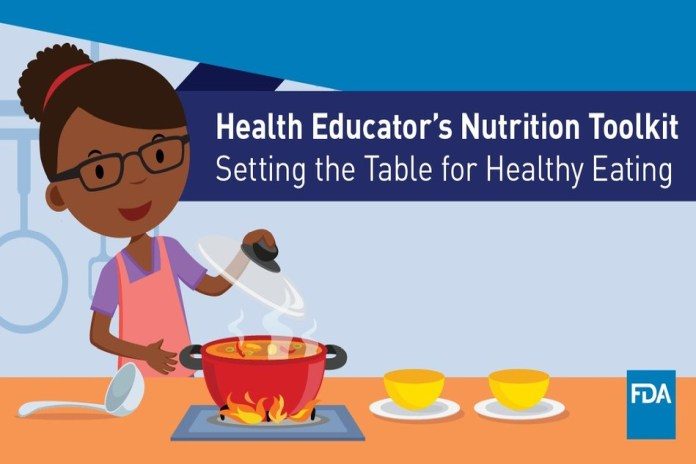SILVER SPRING, Maryland – Apples and cranberries and pumpkins, oh my. Fall is the season of some delicious produce, but it’s also the season of favorite holiday treats.
Luckily, the US Food and Drug Administration (FDA) has made it easier than ever for you to help your audience make healthier food choices (even when it comes to fall treats). Whether you are a health educator, dietitian, or any healthcare or nutrition professional, the Health Educator’s Nutrition Toolkit: Setting the table for healthy eating includes practical nutrition education tools to arm consumers with the knowledge they need to make informed food choices when they are shopping for food, eating at home, or eating out.
These ten tips can help your audience make healthy food choices year-round. For more tips, download the Health Educator’s Nutrition Toolkit.
While food shopping
- Avoid shopping while hungry. If you shop while you’re hungry, you might buy items on impulse that are less healthy.
- Use the Nutrition Facts label to compare foods and find what’s right for you. More often, choose items higher in dietary fiber, vitamins, and minerals, and lower in saturated fat, trans fat, sodium, and added sugars.
- Check the serving size when comparing calories and nutrients in different food products. Some containers may have multiple servings.
- Use the calorie information to compare products and to determine whether and how much of a food can fit within your diet.
When at home
- Plan your meals ahead of time and make sure they include the five MyPlate food groups (fruits, vegetables, grains, protein foods, and dairy). The MyPlate Plan Menu template can help.
- Instead of frying your food, try baking, broiling, grilling, or steaming it.
- Start collecting simple, healthy recipes. The What’s Cooking USDA Mixing Bowl has lots of recipes (including some healthier treats) to help you get started.
When eating out
- Look for calorie and nutrition information. Calorie information can be found on menus or menu boards of restaurants and other food establishments that are part of a chain of 20 or more locations. Many chain restaurants also include nutrition information online, so you can check restaurant websites for nutrition information before you go out.
- Appetizers and side dishes can add many calories to a meal. Steamed, grilled, or broiled vegetables and fruit are often lower-calorie options. With calorie information, you can make the best choice for you.
- When reading menus, keep an eye out for words like creamy, fried, breaded, battered, or buttered. Foods with these descriptions are typically higher in calories and saturated fat than foods described as baked, roasted, steamed, grilled, or broiled.






